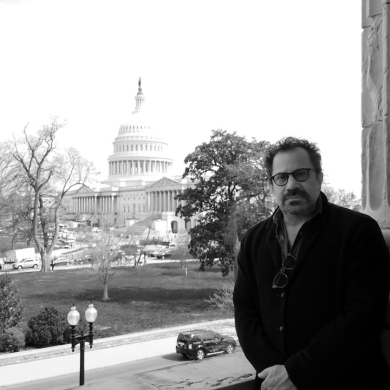Spanning the snowy slopes of Sundance to the grand canals of Venice, film festivals remain one of the most vital showcases to gain exposure and create buzz – for first-time filmmakers and industry vets alike. But now with thousands of festivals worldwide to choose from – each with its own unique deadlines, fees, and application requirements – the submission process can prove especially daunting.
However, there are certain strategic steps you can take that can effectively present your film to festival programmers. Follow these best practices to focus your time and resources wisely the next time you’re submitting a project to festivals.
Do Your Research
As Ben Kingsley noted in his Oscar®-nominated role as gangster Don Logan in Sexy Beast, “Preparation! Preparation! Preparation!” This maxim proves especially true when it comes to submitting your film to a festival.
It’s important to closely examine the history and mission of each film festival to which you’re considering applying. Each one inhabits its own cultural niche, so you need to make certain your film is a good fit – and actually fulfills the submission criteria – before you even send in your application.
Studying the recent programming choices of each festival is also key. As well, is there an emphasis on short films, features, or both? Is the festival geared toward a certain audience or aesthetic?
Festivals can actually prove quite specific in what they will and won’t screen. Some devote their programming entirely to a particular area of interest – documentaries, world cinema, indie films, or even specific genres like sci-fi and horror. Others, meanwhile, demand all entries be world premieres (forbidding previous festival appearances, public screenings, and theatrical/VOD release) as a prerequisite.
Investigate what films have succeeded and won awards in previous years of the festival. At the same time, note what kinds of films and stories haven’t been represented enough. Often programmers want to break new ground, or fill a stylistic void in the lineup; your film just might present the organic solution to their needs.
Choose Wisely
Filmmakers today have more options than ever before when it comes to finding the ideal forums to screen their works. But applying to film festivals ain’t cheap! Of the more than 8,000 that take place every year, submission costs can range from free to over $100. Therefore, applying to, say, 10 festivals can prove quite expensive. Instead of just casting a wide net, be strategic with the ones to which you choose to apply.
If you’re submitting to one of the big festivals like Sundance, Toronto, Berlin, or Cannes, the competition for their limited slots is very high. While all those festivals love new discoveries, one can’t ever assume acceptance to them is a given. You might have better luck as a big fish in a smaller pond – or at least a more specific one.
In addition to the household names, smaller and mid-size festivals – many of which are prestigious in their own right – provide great opportunities for filmmakers. As well, regional fests often prove responsive to films either produced in their area or whose story is set there. There really does seem to be a festival for every film – the iPhone Film Festival, for example, spotlights films created using the world’s most popular smartphone – so take the extra time and effort to explore which one is right to debut your project.
Follow The Rules
Since film festivals receive so many submissions, each one lays out the clear steps necessary to complete their applications. Despite that, numerous filmmakers still often forget to include everything required when submitting their films to fests.
While a simple oversight won’t necessarily disqualify a film for acceptance, it does make programmers’ jobs more challenging when dealing with incomplete submissions. It’s important for filmmakers to ensure that their application is complete and accurate. After all, the application will be given to the very people deciding who’s in and who’s not.
Pay Attention to Deadlines
Many festivals offer three deadlines: early, regular, and late (often with correspondingly increased fees). However, it’s not uncommon for programmers to start watching films and making entry decisions even before the deadline.
That doesn’t mean you should rush your film’s production just to get it in early, though. Programmers will only watch your film once, so make sure it’s your best work, and choose your deadline accordingly.
Be Upfront About Issues
Festivals are used to receiving films in various states of completion. If something in your movie is unfinished – if it’s a medium cut, say, or needs a final sound mix – make it very clear in your application.
Often festivals anticipate this, and actually have a place on submission forms to indicate your film’s production status. If not, contact the festival directly with any questions about any such issues before you apply.
Build Relationships
Building organic (i.e., non-stalkerish) relationships with festival programmers and filmmakers not only helps you better position your movie to get accepted – it also helps you better understand the culture of the festival in general, making current and future submissions even stronger.
Following the festival’s official Twitter, Instagram, and other official social-media outlets – along with those of the individual programmers themselves – is a good way to start this process. Also, try to attend as many festival-related events as possible. Sundance, for example, holds official screenings, Q&As, panels, and seminars outside of the traditional festival window all year round – and in cities ranging from New York and Los Angeles to San Francisco and beyond.
Programmers also scour other festivals for new works, or appear at them as judges, panelists, or consultants. Bigger-name fests frequently cull programmers from smaller or regional ones as well. Therefore, even if you can’t attend Sundance or Berlin, try to consistently attend events held by the film festivals in your area (as well as those where filmmakers and producers are present, such as special museum screenings). This makes for smart networking – getting you inside the festival and filmmaking culture in a way that you wouldn’t otherwise.
Don’t Follow Up
Waiting patiently for a film festival to decide the fate of your film can be tough. Resist the urge to follow up with programmers as to the status of your film, however. All festivals will let you know in a specified timely fashion if your project has been accepted or declined.
If you haven’t learned your acceptance status by the time the festival indicated you would, send a simple email query. However, this might be a good time to start considering other options – and that’s not a bad thing.
After all, as we hope this guide has made clear, with some thought and deliberation it’s possible to find the best film festival home for your production.



